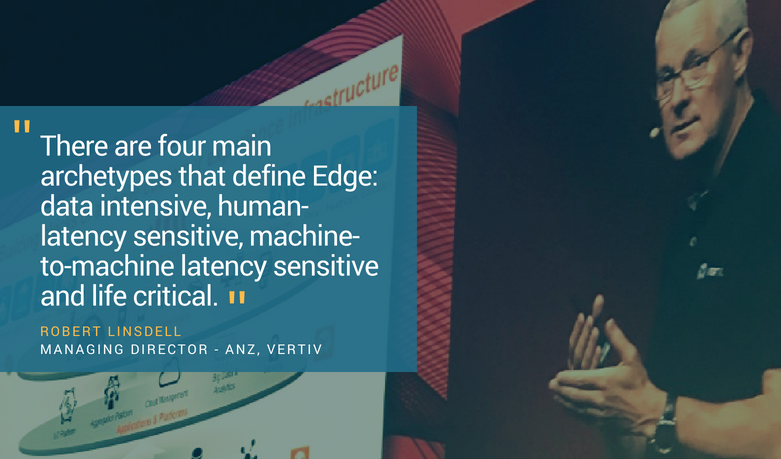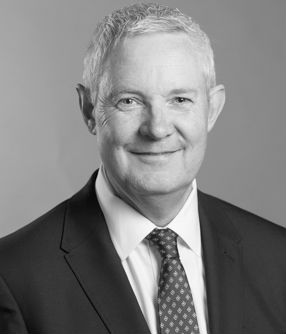Old versus new edge technology
Linsdell makes it clear that there is a big difference between ‘old edge’ and ‘new edge’ technologies.“In the old days, there was no cloud. There was no requirement to centralize data, so you put your assets where you needed them. Then cloud came along, which allowed businesses to centralize and streamline resources,” said Linsdell.Linsdell explains that expectations and demands, in terms of the customer experience, are influenced by technology. Under this new paradigm, customers have little tolerance when it comes to speed, reliability and accessibility, and are quick to change providers or services if their expectations are not met.“Using edge-based services mitigates against part of the problem with the cloud, if the cloud connection goes down or communication is dropped, nothing works,” said Linsdell.Edge data is stored in the most efficient location for the customer or end user, to ensure the fastest speeds and consistent content delivery. A report from the Uptime Institute and 451 Research describes the difference between the edge and ‘near’ edge:“Strictly speaking, the ‘true’ edge is where near-real-time response and action is required, measured in sub-seconds. The edge will have no, or very few, network paths or ‘hops’ and very little or no use of shared communications infrastructure.”As data volumes continue to grow rapidly, so too does the customer’s expectation for a rich media experience.“People expect data to be instantly available. If a fan in a stadium wants to live-stream an event or a commuter wants to catch-up on a Netflix series, a signal many kilometers away in a central data center is unlikely to deliver the best customer experience,” said Linsdell.
Edge and cloud are complementary services
Many experts, such as Robert Linsdell, firmly believe that edge technologies will not replace the cloud, but will work alongside it to deliver business solutions in the most effective way, at the right price. In short, edge computing will complement cloud services and on-premise data to deliver a tailored, hybrid solution.“Hybrid IT is little bit of on-premise computing, like your essential systems or video surveillance cameras, as well as the cloud, which is essential for big data. But cloud is not necessarily good for content because content and bandwidth are expensive. And that’s where the edge comes in, because you’re looking for access to information very quickly,” said Linsdell.Edge technology also provides an extra layer of resilience for enterprises. Within a hybrid solution, leveraging the strengths of the different services together can offer the best of both worlds.“You don’t want to store all your big data at the edge,” said Linsdell. “If you need quick access to a large set of data, cloud is still the best medium, but if you need to make quick localized decisions, hybrid edge is important. People need to understand how to design their IT structure to address the best customer experience.”

Practical applications
Despite its complexity, Vertiv sees the edge as presenting significant opportunity for the real world. The company, along with a team of experts, recently identified four main archetypes for edge applications and the technology required to support them. The four archetypes are:
- Data intensive
- Human-latency sensitive
- Machine-to-machine latency sensitive and
- Life critical
Through the combination of cloud and edge technologies, as well as others such as machine learning and AI, Linsdell asserts that we are about to experience the biggest technological impact we’ll see in our lifetimes.

Banking has changed a lot since 1971.“Advancements in technology have enabled us to do things quicker. For example, in the banking sphere, we moved from tellers to ATMs, to online transfers, through to tap-and-go and Apple Pay.“Now, think of all the interactions which currently occur through a card, phone or a wearable device. All of those will be impacted,” added Linsdell.Linsdell goes on to describe a scenario where a registered shopper scans and places goods in their supermarket basket, with the cost for each item automatically deducted from a linked account as the shopper walks through each aisle. And a retail environment, such as a clothing store, where the RFID tags on each article will activate, identify the shopper at the exit and prompt the deduction of each item from the individual’s bank account.“You won’t even have to tap and go. They will just know that it’s you,” said Linsdell. “Consider the way Facebook tailors its ads, and apply that thinking to a physical retail environment – it will have that level of personalization and relevance.”Linsdell also describes the advanced ordering and payment methods in some food outlets in China. With one outlet for example, customers are visually recognized as they enter the store. Previous orders are ‘remembered’ and favorite meals can then be suggested in later visits, with options that are out-of-stock being excluded from the available selection. And because the outlet has already identified the customer, and been granted access to their account, the bill is paid for automatically, without the customer needing to reach for their pocket or phone.
The edge of the future
In the future, edge technology could also revolutionize the medical field.“Imagine walking into a hospital and the system there already knows who you are. It knows your blood group, it knows that you had a knee operation last year,” said Linsdell.

Connectivity becomes life critical once applied to the medical sector.“We are already seeing reports of AI or deep learning systems being able to more accurately identify illnesses or interpret scans and medical reports.”Once we move to this level of criticality, having patient data reliant on a single, distant connection that has the potential to be disrupted or fail is not an option.Network architecture and data centers as we know it are changing. And it’s not just the big getting bigger, the big are also getting smaller and localizing.The high consumption of internet-based media content and the reliance on cloud-based applications, coupled with a low tolerance for latency, will see a wave of operators drive data centers as close to the end user as possible.Prioritizing content delivery at ‘the edge’ is essentially prioritizing the customer experience, and whilst this shouldn’t come at the expense of security, redundancy or monitoring, technology is the backbone in the operations of our day-to-day lives, and reliability is critical.Interested to know where all the data centers are located across the globe? Take a look at Cloudscene’s North America, Europe and Asia Pacific maps.
About Robert Linsdell
Based in Sydney, Australia, Robert leads Vertiv’s (formerly Emerson Network Power) Australian and New Zealand business. He has more than two decades’ experience across technology-driven industries, including telecoms, electronic materials and powder coating. Robert has previously held board positions with CEPE, Intellect UK and EIPC. More recently, Robert has been leading Vertiv’s business transformation in areas such as data center energy efficiency and edge computing.

Robert Linsdell, Managing Director for Australia & New Zealand, Vertiv
About Vertiv
Vertiv designs, builds and services critical infrastructure that enables vital applications for data centers, communication networks and commercial and industrial facilities. Formerly Emerson Network Power, Vertiv supports today’s growing mobile and cloud computing markets with a portfolio of power, thermal and infrastructure management solutions including the Chloride®, Liebert®, NetSure™ and Trellis™ brands. Sales in fiscal 2016 were $4.4 billion. For more information, visit VertivCo.com.
